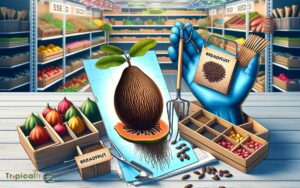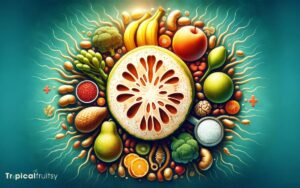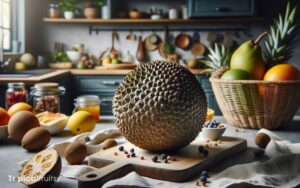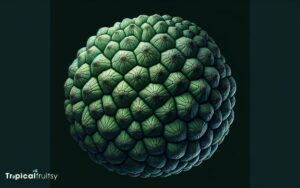Is Jackfruit the Same as Breadfruit? Comparison!
No, jackfruit and breadfruit are not the same. While they belong to the same family, Moraceae, they are different species with distinct characteristics in taste, texture, and culinary uses.
Jackfruit (Artocarpus heterophyllus) and breadfruit (Artocarpus altilis) are tropical fruits that may look somewhat similar at first glance due to their size and spiky skin, but they have several differences:
Unripe jackfruit has a neutral taste, which makes it a good meat substitute in savory dishes. Breadfruit, on the other hand, has a starchy, potato-like flavor when cooked and is less sweet.
Both fruits are nutritious and versatile but serve different culinary purposes and have unique flavors and textures.
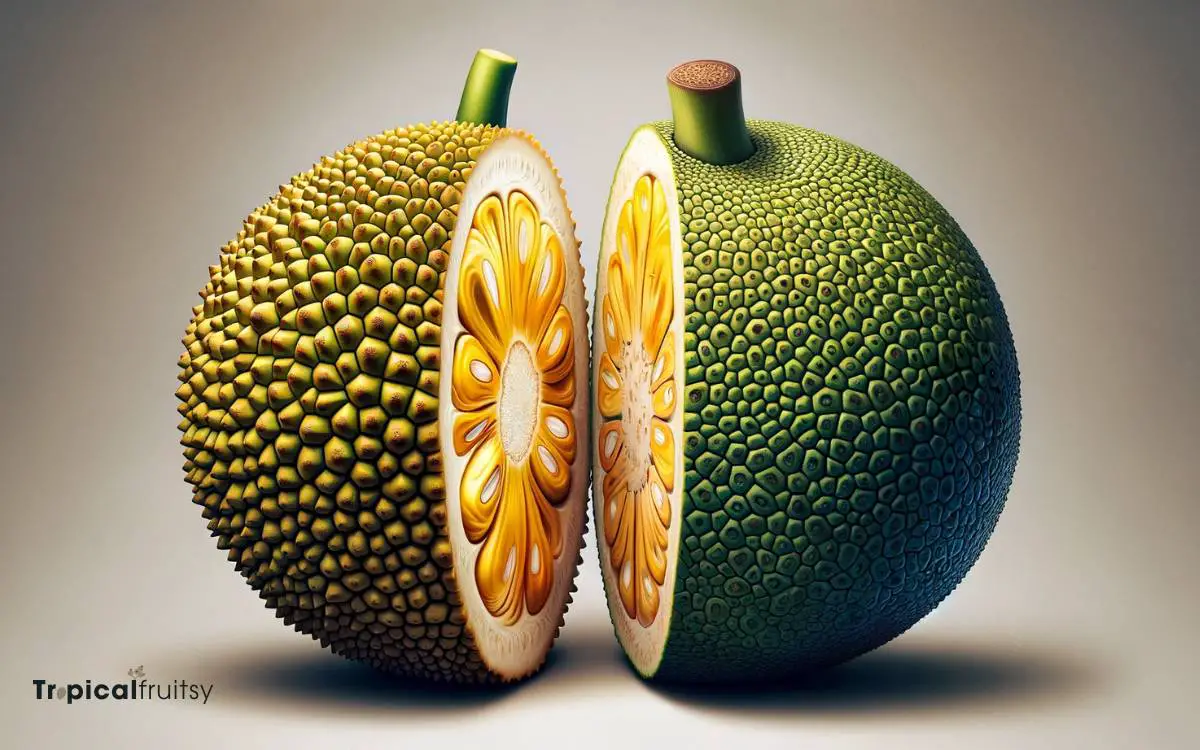
Key Takeaway
Jackfruit vs. Breadfruit: A Comparative Overview
| Characteristic | Jackfruit (Artocarpus heterophyllus) | Breadfruit (Artocarpus altilis) |
|---|---|---|
| Scientific Name | Artocarpus heterophyllus | Artocarpus altilis |
| Common Name | Jackfruit | Breadfruit |
| Native Region | South and Southeast Asia | New Guinea, Indo-Malay |
| Appearance | Large, spiky green or yellow fruit | Round or oval, green fruit |
| Edible Part | Fleshy arils around seeds | Starchy flesh inside |
| Flavor | Sweet and tropical | Mild, starchy |
| Culinary Use | Often used in sweet dishes, as a meat substitute | Typically cooked and used as a vegetable |
| Nutritional Profile | High in carbohydrates, lower in protein and fiber | High in carbohydrates, moderate fiber, and lower protein |
| Culinary Versatility | Commonly used as a meat substitute in vegetarian dishes | Used in various savory and sweet dishes |
| Significance in Hawaii | Grown and enjoyed, but not as culturally significant | Culturally, agriculturally, and ecologically important as ‘Ulu’ |
| Allergenic Potential | Allergic reactions possible for some individuals | Rare allergies reported |
Origins and History
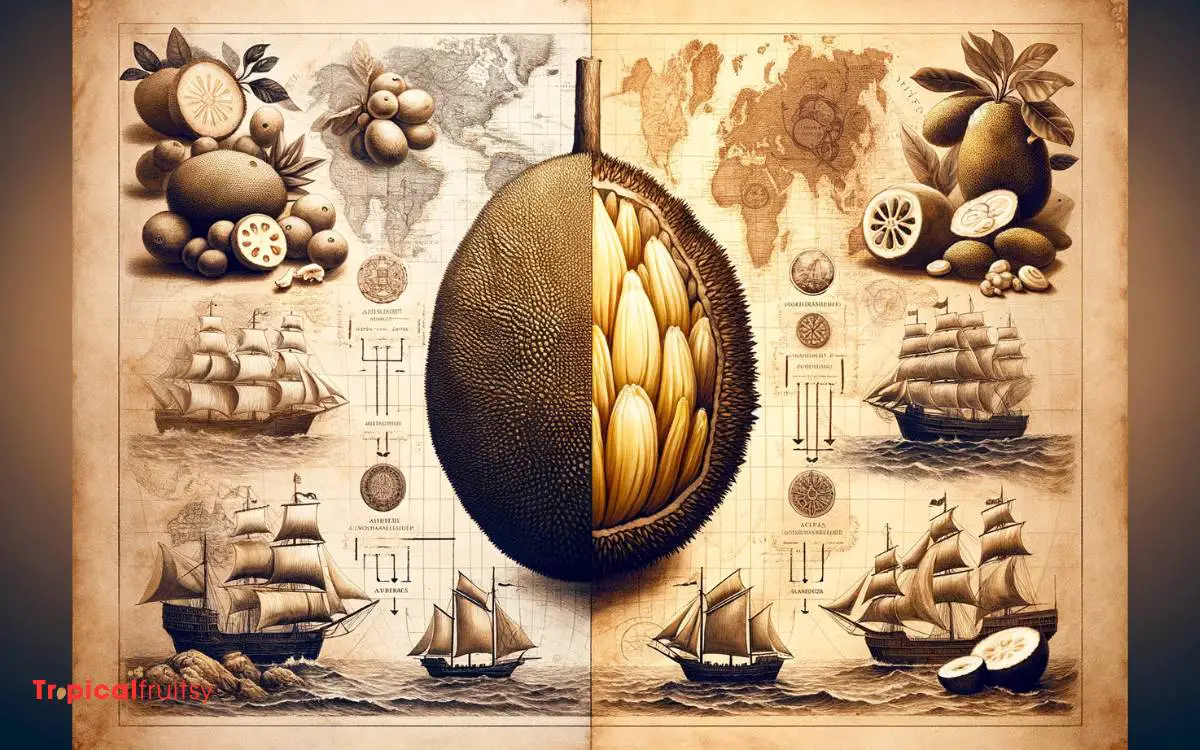
Stemming from distinct botanical lineages, jackfruit and breadfruit each have unique origins and historical pathways that have shaped their respective roles in tropical agriculture and cuisine.
Jackfruit (Artocarpus heterophyllus) is indigenous to Southwestern India, with archaeological findings suggesting its cultivation dates back to 3000 to 6000 years ago.
It flourished in diverse ecosystems, from rainforests to near-coastal areas, due to its robust adaptability.
In contrast, breadfruit (Artocarpus altilis) originates from the vast oceanic expanses of Oceania and was a staple for Polynesian cultures.
Its propagation and dispersal across the Pacific were often deliberate, facilitated by seafaring peoples recognizing its nutritional value.
The profound utility of these species is underscored by their nutritive contributions and historical significance in subsistence economies.
Physical Characteristics
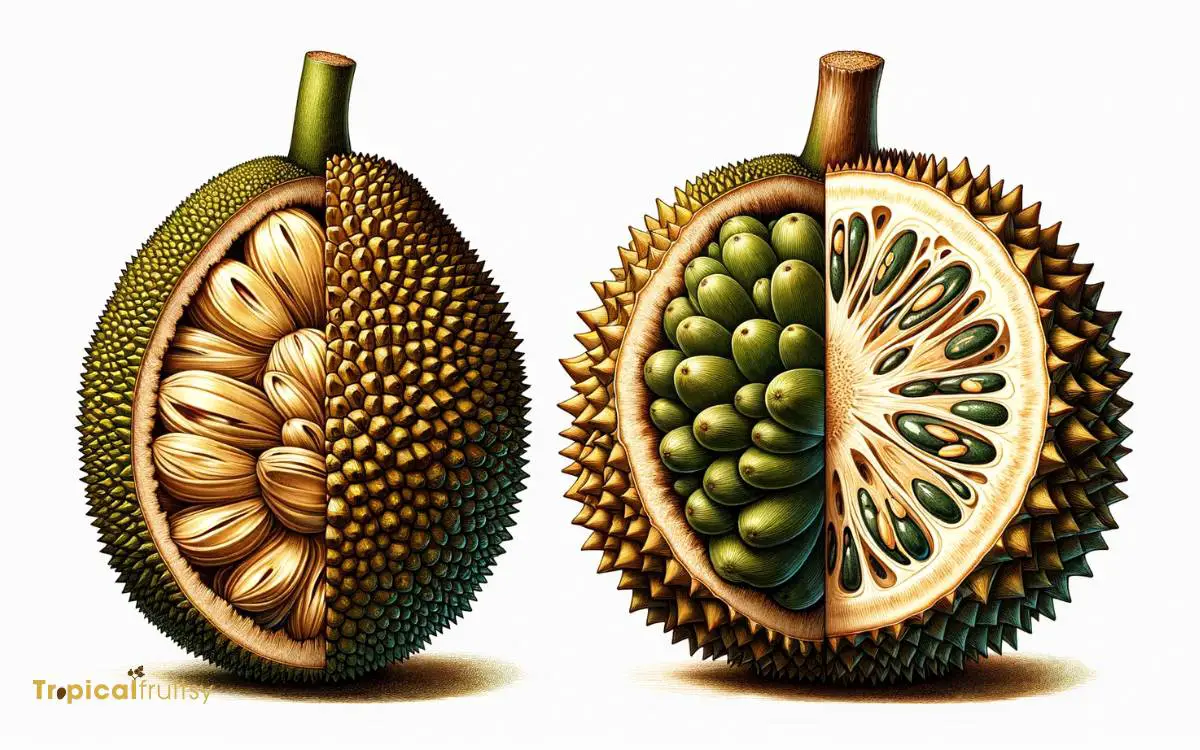
Although both jackfruit and breadfruit belong to the Moraceae family and share a similar oblong shape, they exhibit distinct physical characteristics that differentiate them from one another.
Jackfruit, Artocarpus heterophyllus, is notable for its massive size, with mature fruits typically ranging from 30 to 50 centimeters in length and weighing up to 35 kilograms.
Its exterior is covered in a green to yellow-brown skin, composed of hard, hexagonal, bumpy protrusions.
In contrast, breadfruit, Artocarpus altilis, is smaller, with the average specimen reaching only 15 to 30 centimeters in diameter and weighing up to 3.5 kilograms.
Its skin texture is more variable, ranging from smooth to spiky, and is usually green or yellowish when ripe.
The internal structure also differs: jackfruit contains multiple large, edible seeds, while breadfruit’s flesh is usually seedless and more uniformly textured.
Nutritional Content
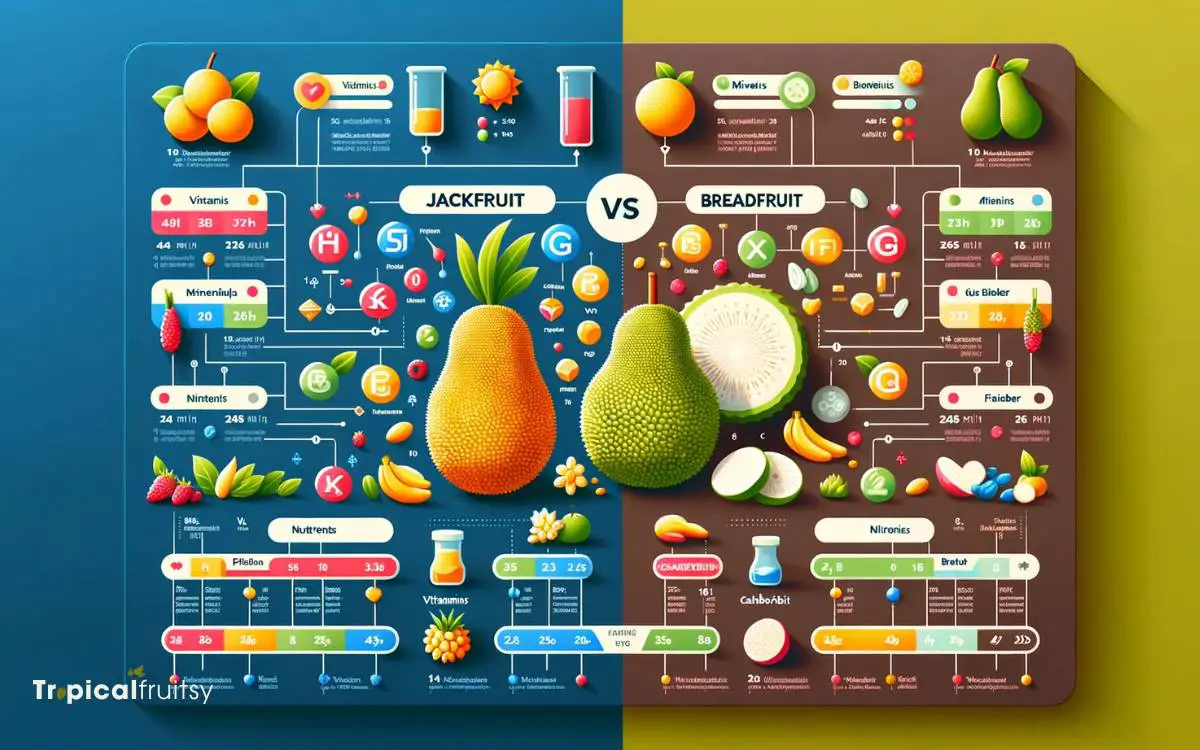
Diverging from their physical attributes, the nutritional profiles of jackfruit and breadfruit are equally distinctive, each offering a unique blend of vitamins, minerals, and dietary fiber.
- Jackfruit: Notable for its high carbohydrate content which provides quick energy. It contains a modest amount of protein and is rich in Vitamin C, potassium, dietary fiber, and some B vitamins, such as pyridoxine (Vitamin B6).
- Breadfruit: Lower in calories than jackfruit, breadfruit boasts a higher fiber content, which is beneficial for digestive health. It’s a good source of complex carbohydrates, antioxidants, and vitamins such as niacin (Vitamin B3) and thiamine (Vitamin B1).
- Micronutrient Variance: While both fruits provide essential nutrients, breadfruit contains higher levels of certain minerals like calcium and phosphorus, which are crucial for maintaining healthy bones and teeth.
Both fruits contribute to a balanced diet, but their nutritional values should be considered in the context of an individual’s dietary needs.
Culinary Uses

One finds distinct culinary applications for jackfruit and breadfruit, reflecting their individual textures and flavor profiles.
Jackfruit, with its fibrous, meat-like consistency, is often employed in vegetarian and vegan cuisines as a meat substitute, notably in tacos, curries, and sandwiches.
Its unripe form imparts a subtle flavor, which absorbs seasonings and spices effectively, making it a versatile ingredient in savory dishes.
Conversely, breadfruit has a starchy composition and a potato-like texture when cooked, lending itself to uses similar to those of root vegetables.
It can be roasted, fried, or boiled, and is frequently incorporated into dishes as a staple carbohydrate, providing a neutral base that complements both bold and delicate seasonings.
The culinary potential of both fruits is significantly influenced by their ripeness and preparation methods.
Flavor Profiles

The distinction between jackfruit and breadfruit extends to their flavor profiles. Jackfruit exhibits a sweet, tropical taste when ripe, whereas breadfruit offers a mild, nutty flavor that is more akin to that of freshly baked bread.
Analyses of their compositional elements reveal the basis for these sensory experiences:
- Ripe Jackfruit: It contains a high concentration of natural sugars such as fructose and sucrose, contributing to its sweetness and fruity nuances.
- Unripe Jackfruit: In its unripe state, it possesses a more subdued taste, which allows it to absorb flavors during cooking, much like tofu or green bananas.
- Breadfruit: Rich in starch, it undergoes a transformation when cooked, developing a potato-like texture and a subtle sweetness that is complemented by its primary nutty, bread-like taste.
Understanding these profiles assists in selecting the appropriate fruit for various culinary applications and predicting the sensory impact on finished dishes.
Environmental Impact
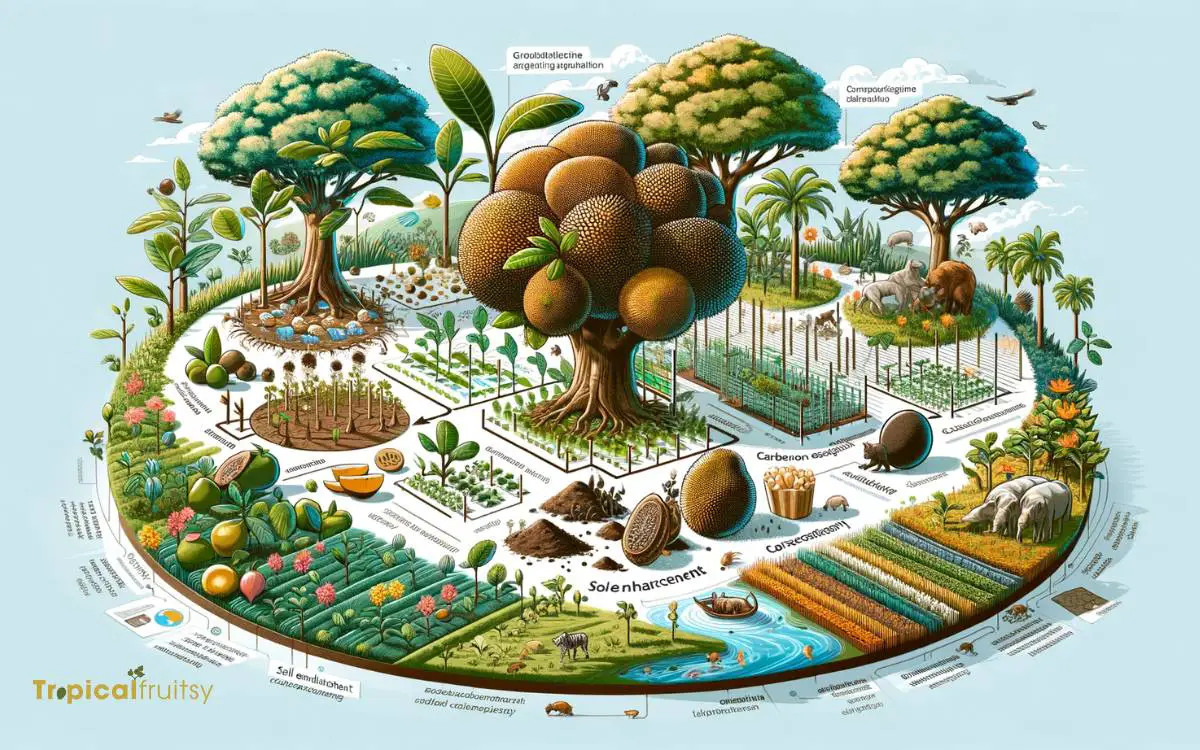
Frequently, the environmental impact of cultivating jackfruit and breadfruit is compared, as both require specific growing conditions that can influence ecosystems differently.
Jackfruit trees are indigenous to the rainforests of South Asia and thrive in humid, tropical environments.
Their cultivation supports the maintenance of these ecosystems, promoting biodiversity. However, they can become invasive in non-native areas, potentially disrupting local flora and fauna.
Conversely, breadfruit trees, originating in the South Pacific, are often lauded for their ability to grow in a variety of soil conditions, including those that are less fertile. This adaptability can prevent soil degradation and promote agricultural sustainability.
Both fruits, when grown responsibly, have the potential to provide environmental benefits, such as carbon sequestration and the creation of microclimates that support various wildlife species.
Can Jackfruit Also Be Harmful for Dogs if Cooked?
Yes, dogs and breadfruit consumption alert should be taken seriously. While jackfruit is safe for dogs when served in moderation, cooked jackfruit seeds can pose a choking hazard and cooked jackfruit flesh can contain high levels of sugar, which may not be suitable for dogs with certain health conditions.
Jackfruit vs Durian vs Breadfruit
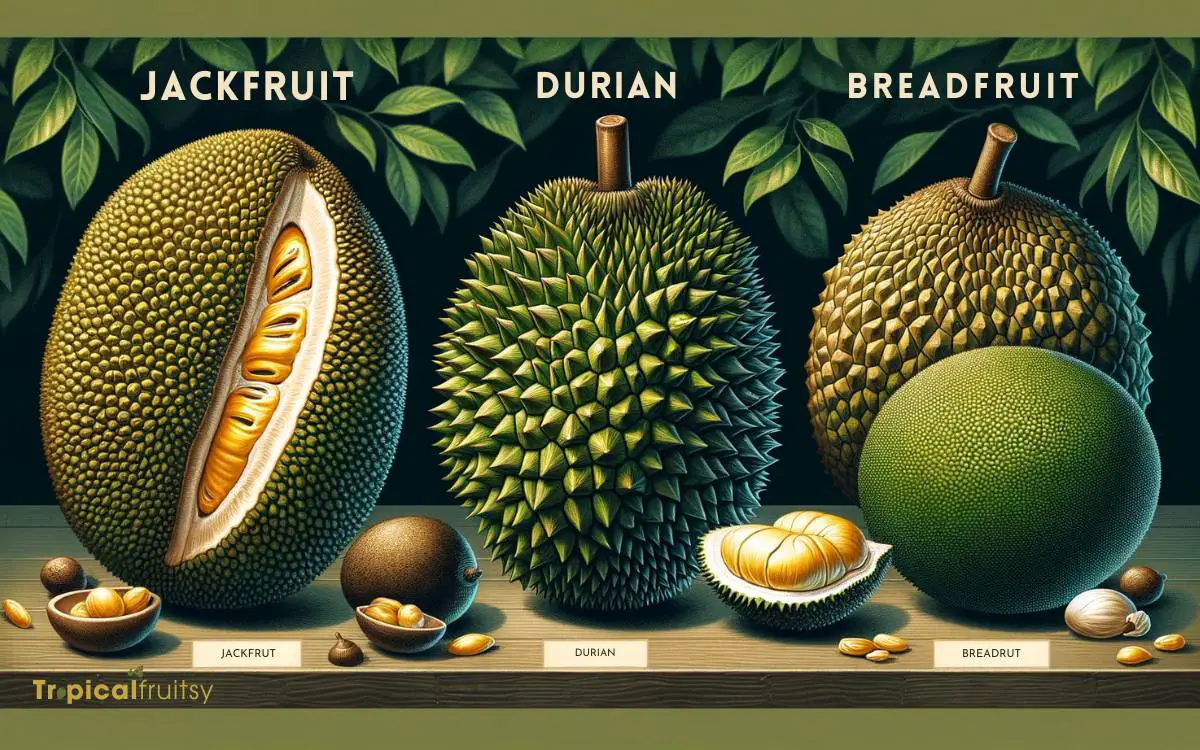
Jackfruit, durian, and breadfruit are three tropical fruits that are often compared due to their size, appearance, and regional availability.
However, they have distinct differences in taste, texture, and culinary uses:
Jackfruit (Artocarpus heterophyllus):
- Taste and Flavor: Jackfruit is known for its sweet and tropical flavor, often described as a combination of pineapple, banana, and mango. The ripe fruit is sweet, while unripe jackfruit has a mild, neutral taste and is often used in savory dishes.
- Texture: The texture of ripe jackfruit is somewhat fibrous and has a similar consistency to pulled pork or chicken when cooked. It is commonly used as a meat substitute in vegetarian and vegan dishes.
- Culinary Uses: Ripe jackfruit is used in desserts, smoothies, and eaten fresh. Unripe jackfruit is used in savory dishes, curries, and stews.
Durian (Durio spp.):
- Taste and Flavor: Durian is famous for its unique and divisive aroma, which some people find unpleasant. The taste of durian varies by variety, but it is often described as a combination of sweet, custard-like flavors with hints of onion or garlic.
- Texture: The texture of durian is creamy and custard-like, similar to a soft cheese or pudding.
- Culinary Uses: Durian is typically eaten fresh when ripe. It is also used in various desserts, candies, and sometimes incorporated into savory dishes in Southeast Asian cuisine.
Breadfruit (Artocarpus altilis):
- Taste and Flavor: Breadfruit has a starchy and mildly nutty flavor. When cooked, it is similar in taste to boiled or roasted potatoes.
- Texture: The texture of breadfruit can vary depending on how it’s prepared. When boiled, it has a texture reminiscent of potatoes. When roasted, it can become crispy on the outside while remaining soft on the inside.
- Culinary Uses: Breadfruit is often used as a starchy staple in tropical regions. It can be boiled, roasted, fried, mashed, or grilled. It is a versatile ingredient and can be used in both savory and sweet dishes.
In summary, while jackfruit, durian, and breadfruit share some similarities due to their size and appearance, they are distinct fruits with different tastes, textures, and culinary applications.
Jackfruit is known for its sweetness and versatility, durian for its unique flavor and aroma (which is not universally loved), and breadfruit for its starchy, potato-like qualities. Each fruit has its own place in the cuisines of the regions where they are commonly grown.
Conclusion
Jackfruit and breadfruit are distinct tropical fruits with unique origins, physical characteristics, nutritional profiles, culinary applications, and flavor nuances.
Despite their differences, both contribute significantly to dietary diversification and sustainability.
An interesting statistic underscoring their environmental impact is that a single jackfruit tree can produce up to 200 fruits per year, offering a substantial food source within its native ecosystem and promising potential as an alternative crop in food-insecure regions.


